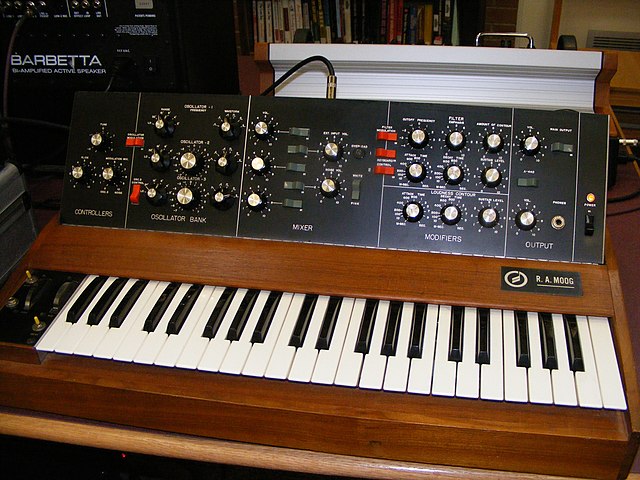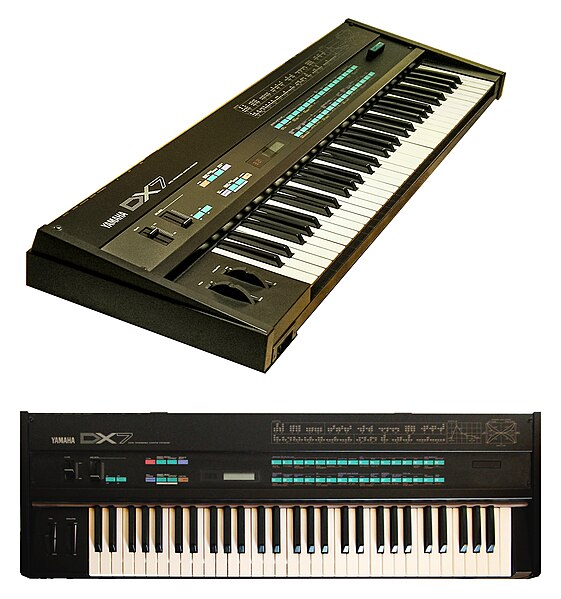Donald Buchla was an American pioneer in the field of sound synthesis. Buchla popularized the "West Coast" style of synthesis. He was co-inventor of the voltage controlled modular synthesizer along with Robert Moog, the two working independently in the early 1960s.
Don Buchla and Buchla 200e (2006 NAMM Show)
Buchla Series 100 (1963/1966–1969)
Sound System from the bus "Further", designed for Ken Kesey and the Merry Pranksters
Analog sequencers (bottom) on Buchla 100 (1963/1966)
A synthesizer is an electronic musical instrument that generates audio signals. Synthesizers typically create sounds by generating waveforms through methods including subtractive synthesis, additive synthesis and frequency modulation synthesis. These sounds may be altered by components such as filters, which cut or boost frequencies; envelopes, which control articulation, or how notes begin and end; and low-frequency oscillators, which modulate parameters such as pitch, volume, or filter characteristics affecting timbre. Synthesizers are typically played with keyboards or controlled by sequencers, software or other instruments and may be synchronized to other equipment via MIDI.
Early Minimoog by R.A. Moog Inc. (c. 1970)
Robert Moog with Moog synthesizers. Many of Moog's inventions, such as voltage-controlled oscillators, became standard in synthesizers.
The Minimoog, introduced in 1970, was the first synthesizer sold in music stores.
The Yamaha DX7, released in 1983, was the first commercially successful digital synthesizer and was widely used in 1980s pop music.








